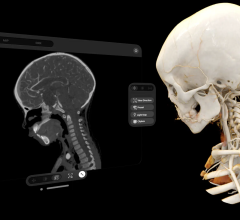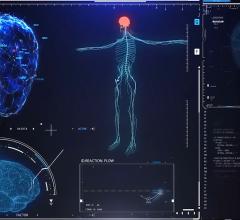
Ellen Hansen, RN, BSN, MS, is director of Clinical Informatics for Children's Healthcare of Atlanta.
Electronic medical information improves patient safety by providing immediate and complete access to complex patient information. Having access to information reduces medical errors — yet three decades have elapsed since the electronic medical record (EMR) was first conceived and 16 years have passed since the Institute of Medicine's report called for EMRs.
But time isn’t the only thing littering the long road to EMR.
In 2002, the U.S. healthcare industry used more than 25 billion pieces of paper. In addition, medical knowledge is currently doubling every two years, which, at this rate, will add more facts about the human body in the next 10 years than in the whole history of medicine.
How can clinicians and physicians possibly learn and apply this influx of knowledge in a paper-driven environment without technology?
These and other regulatory and consumer demands are propelling the healthcare industry to boldly go where so many other industries have already gone: into the world of computerization.
But computerizing medical records is not enough — hospitals must also shift away from record keeping in remote nurses' stations and move to interactive documentation at the patient's bedside. It is at the bedside that ongoing assessment and interaction with patients takes place. Studies have shown that the more time a clinician spends at a patient's bedside, the higher the quality of care and the better
the outcome.
Wireless mobile workstations enable clinicians to make the transition more effectively from remote paper charting to real-time electronic charting at the point of care.
Children's Healthcare of Atlanta recently completed the second stage of a multistage transition to EMRs. Today, Children's has electronic access to admission history, medication administration records, orders, results and pharmacy activities, as well as enhanced communication between clinicians and pharmacy. Wireless mobile workstations from Flo Healthcare have been major tools in the success of this implementation.
Methodical Assessment
How did Children's prepare for the implementation of mobile carts? Children's utilizes “department champions” to partner with the project team in the design and build of the EMR. Department champions are front-line clinicians and end-users who are affected by the implementation of the EMR. The hospital has 120 department champions representing 160 departments.
In July 2004, Children's invited several cart vendors to participate in a multiday vendor fair for the department champions. The vendors each had 10 minutes to present their product, and the champions compared the features through hands-on assessment of each cart. The champions then completed a survey ranking each cart and describing the key features that mattered most to them. From this data, a request for proposal (RFP) was drafted, incorporating the features the champions stated were most important to them.
Armed with this information, Children's participated in the 2005 annual HIMSS conference and assessed the exhibiting vendors. It also conducted an Internet search of viable vendors, matching the end-user RFP requirements to the existing products. It determined the top three cart vendors matching its needs and invited these vendors to Children's for a full-scale assessment.
Narrowing the Search
Each of the vendors provided three carts, along with written instructions, to Children's. One cart from each vendor was placed at each hospital location. The carts were moved unit to unit every 24 hours until every unit had spent a day with the carts. Vendors were not permitted to instruct the staff, because the level of intuitiveness of the cart was one of the chief pre- requisites from end-users.
Additionally, the carts were compared side by side as the end-users had time to interact with them. End-users then completed a survey ranking the RFP features of each cart, and the surveys were collated. Vendors were provided with a summary of the scores and verbatim comments on the features of their carts. The final cart selected was from Flo Healthcare, an Atlanta-based mobile cart vendor.
Overcoming Obstacles
One of the most significant barriers to the adoption of the EMR is the lack of ready access to a computer. By placing one mobile workstation between every two bed spaces in general care areas and one at every bed space in the ICU, Children's is living up to its commitment to eliminate waiting for a workstation to access the EMR.
Involving the end-users in the selection of the cart was a key factor to gaining their buy-in. And by providing wireless capability, recharging opportunities and biometric access, Children's made it easy to move the workstation to where it is needed and to log in and out.
Taking time to educate personnel on the use of the cart ensured that all end-users had the skills and information they needed to be successful. Working closely with internal engineering, biomedical engineering staff and Flo Healthcare, Children's has made sure the carts are in working order at all times. With wireless capability and quick, easy access to the EMR, it doesn't make sense to pass a cart in the hallway to go to the nurses' station anymore.
Children's is now well prepared for the full-scale implementation of EMRs and the continual improvement in the safety and quality of care it delivers.






 May 01, 2024
May 01, 2024 








